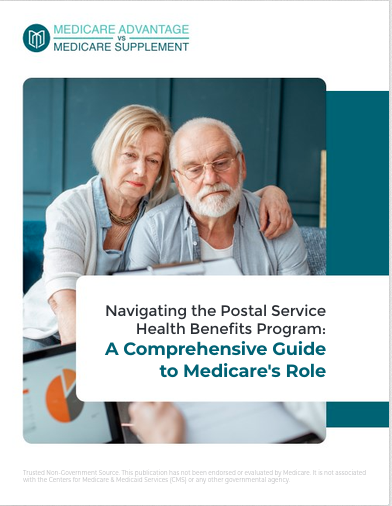Key Takeaways
-
Medicare Advantage plans offer additional benefits beyond Original Medicare, but it’s crucial to understand their limitations before enrolling.
-
Consider factors like coverage, costs, provider networks, and timelines when evaluating your options.
Decoding Medicare Advantage Plans: What You’re Really Signing Up For
Medicare Advantage plans, also known as Part C, have become increasingly popular among Medicare beneficiaries. These plans are an alternative to Original Medicare and bundle your Part A and Part B benefits, often throwing in additional perks like vision, dental, and hearing coverage. But before you jump in, it’s important to ask yourself a few key questions and understand what you’re committing to.
Original Medicare vs. Medicare Advantage: What’s the Difference?
The Basics of Original Medicare
Original Medicare includes Part A (hospital insurance) and Part B (medical insurance). It provides broad access to healthcare providers across the country but doesn’t cover everything. For instance, there’s no coverage for prescription drugs, and you’ll face deductibles, coinsurance, and other out-of-pocket costs.
What Medicare Advantage Brings to the Table
Medicare Advantage plans include all the benefits of Original Medicare, but many also offer extras like prescription drug coverage (Part D), wellness programs, and routine care for vision and dental. These plans operate more like traditional health insurance with networks and specific rules about referrals.
What’s the Catch? Understanding the Costs
Monthly Premiums and Out-of-Pocket Costs
While some plans may appear to offer lower premiums, it’s essential to dig deeper. Medicare Advantage plans often have additional out-of-pocket costs, including copayments and coinsurance. Keep in mind that these costs can add up, especially if you require frequent medical care.
The Out-of-Pocket Maximum
One of the appealing features of Medicare Advantage is the annual out-of-pocket maximum, which Original Medicare doesn’t provide. This means there’s a cap on how much you’ll spend each year on covered services. However, it’s important to remember that this limit only applies to in-network care.
The Network Factor: Why It’s a Big Deal
In-Network vs. Out-of-Network Providers
Medicare Advantage plans typically have provider networks. If you see an in-network provider, you’ll usually pay less. However, going out of network can lead to significantly higher costs or no coverage at all. If you’re someone who values the freedom to choose any doctor or hospital, this could be a major drawback.
Do Your Doctors Participate?
Before enrolling, check whether your current doctors, specialists, and preferred hospitals are part of the plan’s network. If they aren’t, you’ll need to decide whether you’re willing to switch providers or pay extra for out-of-network care.
Prescription Drug Coverage: Not Always Included
Some Medicare Advantage plans include prescription drug coverage, while others don’t. If this is important to you, ensure that the plan you’re considering includes Part D. Additionally, review the formulary—the list of covered medications—to make sure your prescriptions are included.
How Drug Tiers Affect Costs
Medicare Advantage plans with drug coverage often group medications into tiers. Lower-tier drugs are less expensive, while higher-tier drugs can come with substantial copayments or coinsurance. Understanding this structure is key to estimating your costs.
What’s Your Lifestyle? Matching Plans to Your Needs
Frequent Travelers
If you travel frequently, especially out of state, check the plan’s coverage for out-of-area care. Some Medicare Advantage plans provide emergency coverage nationwide, but routine care may be limited to your local network.
Chronic Conditions
If you have a chronic condition, some Medicare Advantage plans offer special needs plans (SNPs) tailored to individuals with specific health conditions. These plans often provide extra support and care coordination.
Timing Is Everything: Enrollment Periods You Need to Know
Initial Enrollment Period (IEP)
Your first opportunity to enroll in a Medicare Advantage plan is during your Initial Enrollment Period, which starts three months before you turn 65 and ends three months after your birthday month. Missing this window could mean waiting months for another chance to enroll.
Annual Enrollment Period (AEP)
The Annual Enrollment Period runs from October 15 to December 7 each year. During this time, you can join, switch, or drop a Medicare Advantage plan, with changes taking effect on January 1 of the following year.
Medicare Advantage Open Enrollment Period (MA OEP)
From January 1 to March 31, current Medicare Advantage enrollees can make one change, such as switching plans or returning to Original Medicare. This is a valuable opportunity if your initial choice doesn’t meet your needs.
Comparing Plans: What to Look For
Benefits Beyond Medicare
Review the plan’s extra benefits, such as fitness memberships, over-the-counter allowances, or telehealth services. These can add value, but they shouldn’t overshadow the plan’s core features, like provider networks and cost-sharing structures.
Star Ratings
Medicare assigns star ratings to Advantage plans, with five stars being the highest. These ratings are based on factors like customer service, member experience, and health outcomes. While not the sole deciding factor, star ratings can help you identify high-quality plans.
The Hidden Pitfalls of Medicare Advantage Plans
Prior Authorizations
Many Medicare Advantage plans require prior authorization for certain services, meaning you’ll need the plan’s approval before receiving care. This can lead to delays, especially for specialized treatments or procedures.
Limited Coverage Areas
Medicare Advantage plans are often regional, meaning they’re tailored to specific geographic areas. If you move out of the plan’s service area, you’ll likely need to choose a new plan.
Don’t Forget to Compare Your Options
Original Medicare with Medigap
For some people, Original Medicare combined with a Medigap policy and Part D coverage might be a better fit. Medigap policies help cover out-of-pocket costs, and you’ll retain the freedom to choose any doctor or hospital that accepts Medicare.
Understanding Your Needs
Before making any decision, take time to assess your healthcare needs, financial situation, and priorities. What works for one person may not work for another, so tailor your choice to your unique circumstances.
How to Make an Informed Decision
Use Medicare’s Plan Finder Tool
Medicare’s official Plan Finder tool is a great resource for comparing Medicare Advantage plans in your area. You can filter by cost, benefits, and star ratings to narrow down your options.
Seek Expert Guidance
Consider consulting with a licensed Medicare counselor or advisor. They can provide personalized recommendations and help you understand the fine print of each plan.
What to Do Next: Preparing for Your First Medicare Advantage Plan
If you’ve decided to go with a Medicare Advantage plan, take the following steps to ensure a smooth transition:
-
Confirm Your Enrollment Timeline: Ensure you’re enrolling during the correct period to avoid penalties or delays.
-
Verify Your Coverage: Review your plan’s benefits, provider network, and prescription drug formulary.
-
Understand Your Responsibilities: Familiarize yourself with your plan’s rules, including prior authorization requirements and cost-sharing structures.
By carefully evaluating your options and understanding the details, you can make the most of your Medicare Advantage plan and avoid unexpected surprises.
Making the Most of Your Medicare Choices
Medicare Advantage plans offer unique benefits and challenges. By taking the time to evaluate your options, compare plans, and understand their features, you can select a plan that aligns with your needs and lifestyle. Remember, the right choice depends on your personal circumstances, so focus on what matters most to you.









